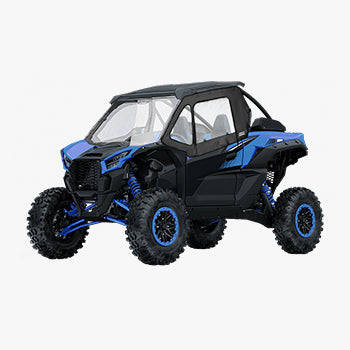16 tips to enhance your ice-fishing journey
This winter, you can follow the tips below to make your ice-fishing experience the most pleasurable. Get in touch with us in the comment area or by email if you have any questions.
- Avoid going ice fishing alone.
When you have plans for ice fishing, you should share this idea with your family and friends or take them with you. This way, you can look after and assist one another to ensure your safety. - Actively communicate.
It would be best if you familiarize yourself with the conditions of the lake’s surface. Find local residents for directions and critical information, such as the thickness of the ice, water movement, and other details of the lake. Active communication can ensure that you have sufficient knowledge to comprehend the environment. - Determine the ice thickness of the lake.
- 2 inches or less - stay away!
- 4 inches - ice fishing or other hiking activities
- 5 inches - snowmobile or all-terrain vehicle
- 8 to 12 inches - car or small pickup
- 12 to 15 inches - medium truck
- Keep your ice shed ventilated.
Your ice shed must be ventilated. If necessary, install a proper ventilation device for your ice shed because poor ventilation will quickly lead to carbon monoxide poisoning. - Leave the lake before dark.
Navigating at night in frigid winter is very dangerous, especially on roads with snow. You must ensure the proper operation of the navigation equipment in your car. Otherwise, it is challenging to find a way out of the ice. - Use plastic as bait occasionally.
Although it seems unlikely to use plastic as bait, there will be exquisite plastic bait on the market, which can attract bluegill fish and other pan fish. Switching a small 1/80-round head clamp with a plastic strip on the hook could be beneficial when you use plastic as bait. - Twist your fishing line.
If you move the fishing jig up and down, the fish in the lake will get used to it this way, making it difficult for them to catch the bait. So instead, change the rhythm by holding the fishing line between your index finger and thumb, then rolling or twisting the line. This will make the jig rotate in the water while maintaining the depth of the jig. In addition, you can also try to move the jig around the fishing hole to induce the fish to react. - Look into the hole from time to time.
Trying to glare at the hole and letting the fish bite is a skill for fish with stiff necks. At the same time, it is also an effective way to catch more giant bluegill sunfish and overhanging perch. The big bluegill fish will hover in front of the bait for a few seconds and then inhale the bait. Because this process is very swift, you can hardly feel the change in the fishing line. You will stare at the fish hole from time to time and bring the hooked fish into your bag. - Be familiar with the use of ice drills.
Take the ice drill with you. It is mainly used for drilling quickly and efficiently at the beginning. When you first operate it, read the user manual carefully. Finally, when you are finished using the auger, avoid being injured by sharp blades and store it in a safe place. - Carry the upper rescue claw.
Carry at least one pair of ice cones/rescue claws. Always carry a pair of high-quality ice axes with you during ice fishing. If the ice suddenly changes and you fall into the lake, the rescue claw may help you climb out. Therefore, remember to bring this rescue equipment. - Carry a throwing rope.
Similarly, the throwing rope is also used for emergency situations. For example, when your partner has an accident, it can pull your partner to a safe place. - Get the floating suit ready.
It is crucial to wear a floating suit during ice fishing. If you fall into the water accidentally, the floating suit can keep you warm and help you escape from the icy water more efficiently. - Get essential thermal clothing.
The temperature of minus ten degrees may make you feel uncomfortable when waiting for the fish to bite. At this time, a warm suit is fundamental. Some of the necessary warm clothing includes a heated vest, a warm jacket, warm gloves, warm socks, and so on. - Take a portable mobile power supply.
Your smart device can quickly run out of battery during outdoor travel, and a high-quality portable charger can solve this problem. In particular, although large-capacity chargers are slightly more expensive, they can provide various charging methods to charge multiple smartphones simultaneously. - Put on sunglasses.
You must wear sunglasses if you go ice fishing on a sunny day. When the sun shines on the ice and then reflects into your eyes, hurting your eyes for a long time. So buy a pair of high-quality polarized fishing sunglasses to protect your eyes effectively. - Prepare snacks and drinks.
Take some healthy snacks rich in protein, such as dried meat and ham sausage, to make your ice fishing trip more lasting. To some extent, the food you take determines how long you can stay.











